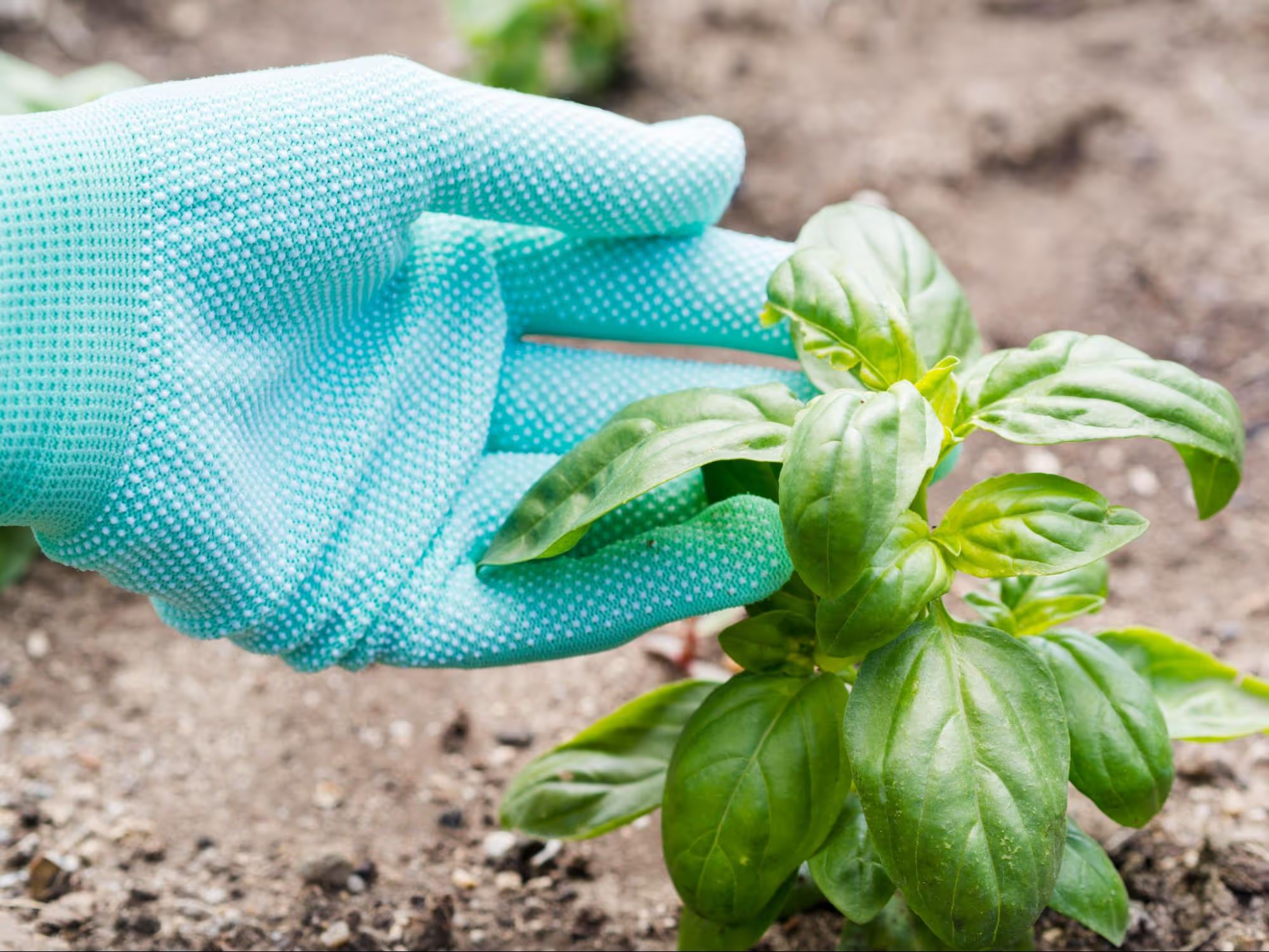
Basil is one of the most valued plants in gardens and on balconies, recognized for its distinct taste and aroma. Although very popular, like all other plants, basil is prone to various diseases and pest attacks. For maintaining a healthy plant and achieving a good yield throughout the growing season, it is essential to recognize disease symptoms and apply appropriate treatments.
Powdery mildew is a fungal disease that attacks basil, especially in humid and congested conditions. While not fatal in its early stages, it can significantly affect the plant’s growth and the quality of its leaves. The disease is recognizable by a whitish, powdery layer on the upper side of the leaves, resembling ash or dust. The leaves turn yellow, curl, and in severe cases, fall off, while the plant's growth slows and it appears weak. To prevent and treat powdery mildew, it is recommended to water properly without over-wetting the leaves to prevent creating favorable conditions for fungal growth. Additionally, applying copper or sulfur-based fungicides can effectively control this disease. Ensuring good ventilation between plants, which allows for better air circulation, further helps reduce humidity and prevent fungal spread.
Aphids are a common pest that can severely affect basil, especially during its early growth stages. These small insects suck plant juices, weakening the plant and potentially transmitting various diseases. Aphids can be recognized by their small, soft bodies and the colonies they form on the underside of leaves. They can be black, green, yellow, or red, and the leaves become deformed and yellow. A sticky substance, known as "honeydew," may also appear on the underside. To treat and prevent aphids, encouraging the presence of natural predators like ladybugs, which feed on aphids, is recommended. Another effective treatment is spraying the leaves with a soap and water solution, which helps control these pests. In case of a severe infestation, an insecticide based on pyrethrin or neem oil, which is safe for garden use, can be applied.
Spider mites are microscopic pests that can seriously harm basil. Although very small and difficult to spot with the naked eye, their signs become evident on the leaves. On the underside of the leaves, tiny red or green insects can be seen, and the leaves become mottled with brown or yellow spots. Occasionally, spider webs may be visible, and in the case of a severe infestation, the leaves may completely dry out. To treat and prevent spider mites, increasing humidity is recommended, as spider mites cannot tolerate moisture. Occasional spraying of the plant with water can help control them. Additionally, neem oil effectively combats these pests. In case of a significant infestation, commercial insecticides specifically designed to target spider mites can be used.
Root rot is one of the most dangerous diseases that can affect basil, caused by fungi and bacteria that attack the roots. This disease can lead to the wilting and eventual decay of the plant. Symptoms of root rot include yellowing of the leaves, which then become dry and fall off, slowing of plant growth, and the roots turning black, soft, and emitting an unpleasant odor. The soil around the roots may be excessively moist, and the plant may appear weak. To prevent and treat root rot, it is essential to provide a good drainage system to prevent excessive moisture retention around the roots. Also, watering should be done moderately, avoiding over-saturation of the soil. In case of a serious infestation, fungicides for fungal infections can be applied. If the plant is severely infected, it is best to remove it to prevent the disease from spreading to other plants.
For successful growth and development of basil, it is important to monitor its health regularly and respond promptly to the first signs of disease or pest attacks. Proper care, including appropriate watering, good ventilation, and regular checks, can significantly reduce the risk of infections and pest invasions. If problems arise, applying the correct treatments, whether fungicides, insecticides, or natural methods, helps preserve plant health. Prevention is always better than cure, so consistent attention is key to enjoying healthy, thriving basil throughout the growing season.